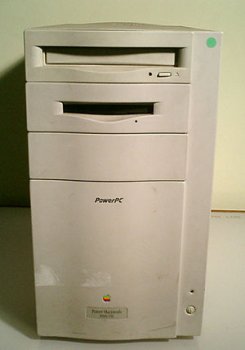Hi, I know this is a TOTAL long-shot, but I'm wondering if anyone knows where I could find a really old Mac (Power Mac 8500 or similar) for purchase? I work as a graphic designer, and had an old one that I occasionally used for many years, that died, and still had some very old (but still important) graphics files for longtime clients. I realize it's a total dinosaur and most of you are probably cracking up at this quest, but I'm thinking that I might be able to use my existing hard drive on another machine and possibly be able to access the files. Sorry, I know this sounds pathetic, but just trying to figure out whether anything like this would even be available anymore. Is there a site to buy old Macs? I'm checking Craiglist, etc. but just wondering if there is something known by all the experts who might read this. THANKS! 
(by the way, I have the monitor and keyboard, just would need the tower!)
(by the way, I have the monitor and keyboard, just would need the tower!)


